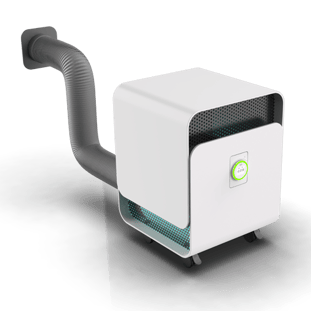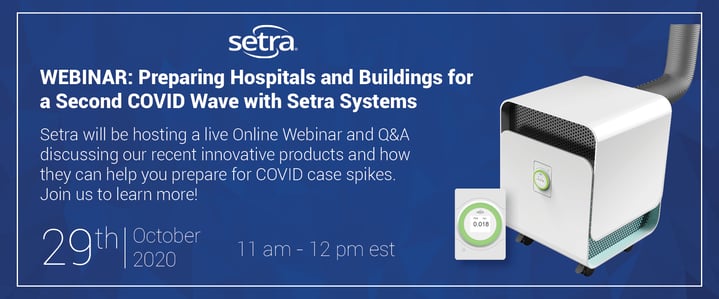It is paramount for schools to put safety first as students prepare to return amidst all the concerns of the coronavirus. An isolation area, separate from any other spaces in the school where medical care is provided, means students displaying symptoms can safely remain isolated until they are picked up.
What are Isolation Rooms?
Isolation rooms are designed to prevent dangerous particles from spreading beyond a specific area. To accomplish this, isolation rooms are negatively pressurized. The American Society of Heating, Refrigerating, and Air-Conditioning Engineers (ASHRAE) Standard 170, a standard for hospitals, requires a negative pressure of at least -0.01" WC for an Airborne Infection Isolation Room (AIIR). It is common to have isolation rooms with -0.02" WC to -0.03" WC to account for variances in an HVAC system. With the isolation room negatively pressurized relative to the hallway or outside area, any aerosols or particles in the air will not be able to escape the room. Negative pressure draws clean air into the room. To further prevent chances of contamination, air from isolation rooms should not be returned to the building's main air supply system. In a typical hospital isolation room, this exhaust has dedicated ductwork with high-efficiency particulate air (HEPA) filters that moves it to ventilation stacks on the roof where it is exhausted out and diluted by atmospheric air.
It is important to note that negative pressure does not mean the absence of pressure. Rather, it means the room or space in question has a lower pressure than the space around it. This control of the differential pressure between an isolation area and the surrounding space helps to limit aerosol and particle transmission.
How to Create Isolation Rooms in Schools
Adjusting a building's HVAC system to achieve negative pressure and subsequent removal of contaminated air in a particular space is possible. However, such changes to an established HVAC system can be time-consuming, complex, and expensive. A portable unit like Setra's Negative Pressure Air Quality Module allows for a quick, cost-effective way to convert a room into an isolation room.
 Creating a negative pressure COVID-19 Related Isolation Space and preventing contaminated air from escaping is easy with the Negative Pressure Air Quality Module. It can pull a room not traditionally designed as an isolation room negative. A HEPA filter and UVC light work to sterilize the air to create the safest possible exhaust. Instead of recirculating the air, the module exhausts the 99.9% cleaned air out of the room, thus reducing the potential for exposure to any airborne particles. With the Negative Pressure Air Quality Module, which includes the Setra Lite room pressure monitor, the space can be pulled negative and constantly monitored, with a red/green light indicator showing whether or not the room is safe.
Creating a negative pressure COVID-19 Related Isolation Space and preventing contaminated air from escaping is easy with the Negative Pressure Air Quality Module. It can pull a room not traditionally designed as an isolation room negative. A HEPA filter and UVC light work to sterilize the air to create the safest possible exhaust. Instead of recirculating the air, the module exhausts the 99.9% cleaned air out of the room, thus reducing the potential for exposure to any airborne particles. With the Negative Pressure Air Quality Module, which includes the Setra Lite room pressure monitor, the space can be pulled negative and constantly monitored, with a red/green light indicator showing whether or not the room is safe.



